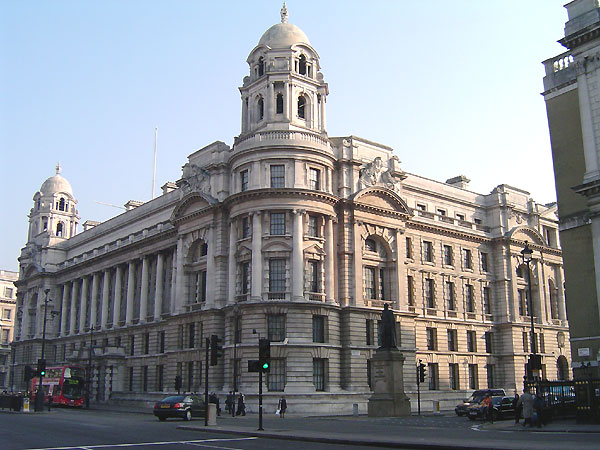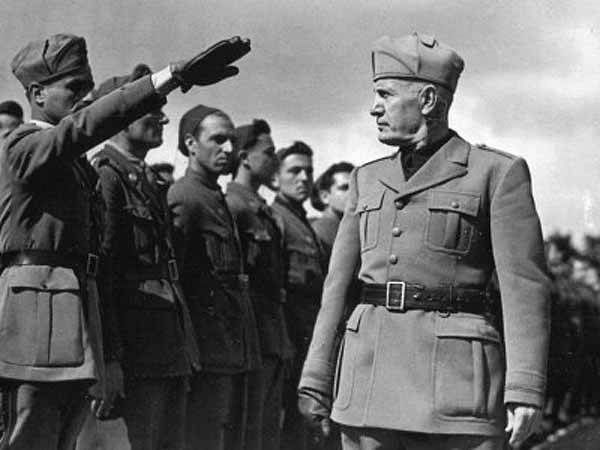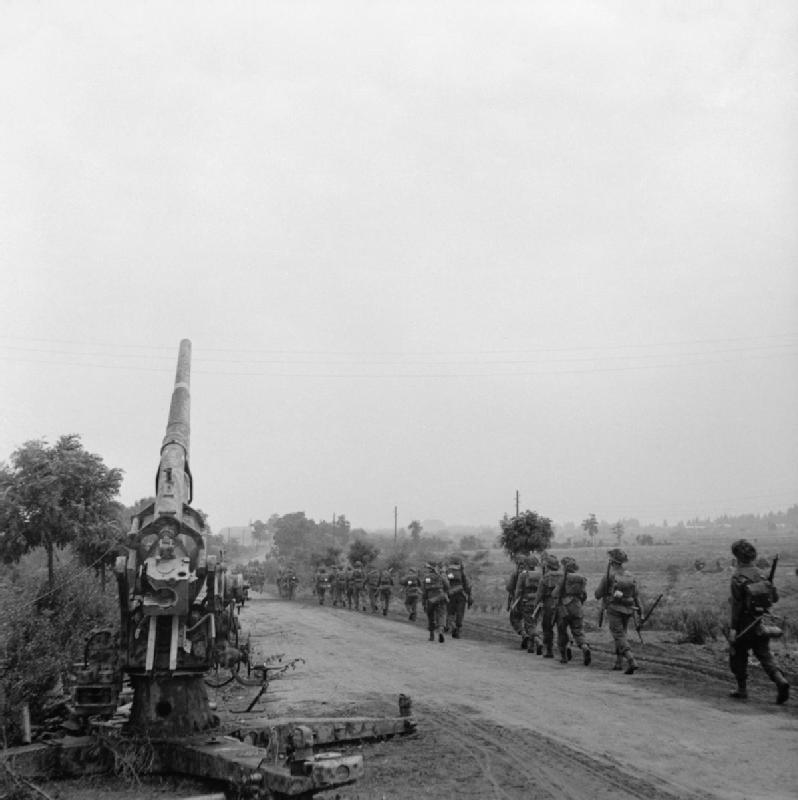|
King's Road Drill Hall
The King's Road drill hall, sometimes referred to as the Old Cavalry Barracks, is a former military installation in King's Road (formerly Cemetery Road) in Bury St Edmunds. It is a Grade II listed building. History The building was designed by Richard Phipson as the headquarters of the West Suffolk Militia Regiment and was completed in 1857. It became the headquarters of the Suffolk Yeomanry in the early 20th century. The regiment was mobilised at the drill hall in August 1914 before being deployed to Gallipoli and, ultimately, to the Western Front. After the war the regiment converted to become 411 (Suffolk Yeomanry) Battery, 108th (Suffolk and Norfolk Yeomanry) Brigade, Royal Field Artillery and then evolved to become 217 (Suffolk Yeomanry) Battery, 55th (Suffolk and Norfolk Yeomanry) Anti-Tank Regiment, Royal Field Artillery in 1939. After the Second World War, the regiment was re-constituted as 308th (Suffolk Yeomanry) Anti-Tank Regiment, RA with headquarters at Bury St Edmu ... [...More Info...] [...Related Items...] OR: [Wikipedia] [Google] [Baidu] [Amazon] |
Bury St Edmunds
Bury St Edmunds (), commonly referred to locally as ''Bury,'' is a cathedral as well as market town and civil parish in the West Suffolk District, West Suffolk district, in the county of Suffolk, England.OS Explorer map 211: Bury St. Edmunds and Stowmarket Scale: . Publisher:Ordnance Survey – Southampton A2 edition. Publishing Date:2008. The town is best known for Bury St Edmunds Abbey and St Edmundsbury Cathedral. Bury is the seat of the Diocese of St Edmundsbury and Ipswich of the Church of England, with the episcopal see at St Edmundsbury Cathedral. The town, originally called Beodericsworth, was built on a grid pattern by Abbot Baldwin around 1080. It is known for brewing and malting (Greene King brewery) and for a British Sugar processing factory, where Silver Spoon sugar is produced. The town is the cultural and retail centre for West Suffolk and tourism is a major part of the economy. The built up area had a population of 41,280 at the 2021 United Kingdom census, 2021 c ... [...More Info...] [...Related Items...] OR: [Wikipedia] [Google] [Baidu] [Amazon] |
War Office
The War Office has referred to several British government organisations throughout history, all relating to the army. It was a department of the British Government responsible for the administration of the British Army between 1857 and 1964, at which point its functions were transferred to the new Ministry of Defence (United Kingdom), Ministry of Defence (MoD). This article contains text from this source, which is available under th Open Government Licence v3.0 © Crown copyright It was equivalent to the Admiralty (United Kingdom), Admiralty at that time, which was responsible for the Royal Navy (RN), and (much later) the Air Ministry, which oversaw the Royal Air Force (RAF). The name 'Old War Office' is also given to the former home of the department, located at the junction of Horse Guards Avenue and Whitehall in central London. The landmark building was sold on 1 March 2016 by HM Government for more than British pound, £350 million, on a 250-year lease for conversion int ... [...More Info...] [...Related Items...] OR: [Wikipedia] [Google] [Baidu] [Amazon] |
Listed Building
In the United Kingdom, a listed building is a structure of particular architectural or historic interest deserving of special protection. Such buildings are placed on one of the four statutory lists maintained by Historic England in England, Historic Environment Scotland in Scotland, in Wales, and the Historic Environment Division of the Department for Communities in Northern Ireland. The classification schemes differ between England and Wales, Scotland, and Northern Ireland (see sections below). The term has also been used in the Republic of Ireland, where buildings are protected under the Planning and Development Act 2000, although the statutory term in Ireland is "Record of Protected Structures, protected structure". A listed building may not be demolished, extended, or altered without permission from the local planning authority, which typically consults the relevant central government agency. In England and Wales, a national amenity society must be notified of any work to ... [...More Info...] [...Related Items...] OR: [Wikipedia] [Google] [Baidu] [Amazon] |
Richard Phipson
Richard Makilwaine Phipson (1827–1884)Wilson p. 158. was an English architect. As diocesan architect for the Anglican Diocese of Norwich, he was responsible for renovating almost 100 churches in East Anglia. Biography Phipson was born in Ipswich. He was diocesan surveyor (architect) for the Anglican Diocese of Norwich from 1871 to 1884, and a county surveyor in the 1860s, though he was active from the 1850s. He restored a large number of churches in East Anglia in the middle and late 19th century: he was "fond of big, unexpected figure and foliage carvings".Wilson 446–47. He was responsible, for instance, for the St John the Baptist church in Harleston, the interior of the St Peter Mancroft church in Norwich, and the near-complete rebuilding of St Mary le Tower church in Ipswich. The diocese then included East Suffolk, where he worked on many churches, including All Saints, Holbrook, Thelnetham Church and St Mary's Burgh-next-Aylsham. Notable projects St Mary-le-Tower ... [...More Info...] [...Related Items...] OR: [Wikipedia] [Google] [Baidu] [Amazon] |
Suffolk Yeomanry
The Duke of York's Own Loyal Suffolk Hussars was a Yeomanry regiment of the British Army. Originally formed as a volunteer cavalry force in 1793, it fought in the Second Boer War as part of the Imperial Yeomanry. In World War I the regiment fought at Gallipoli, in Palestine and on the Western Front. The unit was subsequently converted into a Royal Artillery unit, serving in the anti-tank role North Africa, Italy and France during World War II. The lineage is maintained by No. 677 (Suffolk and Norfolk Yeomanry) Squadron AAC. French Revolutionary and Napoleonic Wars After Britain was drawn into the French Revolutionary Wars, a number of independent cavalry troops were raised in the county of Suffolk from August 1793. The following year, the government of Prime Minister William Pitt the Younger proposed that the counties should form corps of Yeomanry Cavalry that could be called on by the King to defend the country against invasion or by the Lord Lieutenant to subdue any civil diso ... [...More Info...] [...Related Items...] OR: [Wikipedia] [Google] [Baidu] [Amazon] |
Gallipoli
The Gallipoli Peninsula (; ; ) is located in the southern part of East Thrace, the European part of Turkey, with the Aegean Sea to the west and the Dardanelles strait to the east. Gallipoli is the Italian form of the Greek name (), meaning 'beautiful city', the original name of the modern town of Gelibolu. In antiquity, the peninsula was known as the Thracian Chersonese (; ). The peninsula runs in a south-westerly direction into the Aegean Sea, between the Dardanelles (formerly known as the Hellespont), and the Gulf of Saros (formerly the bay of Melas). In antiquity, it was protected by the Long Wall, a defensive structure built across the narrowest part of the peninsula near the ancient city of Agora. The isthmus traversed by the wall was only 36 stadia in breadthHerodotus, ''The Histories''vi. 36 Xenophon, ibid.; Pseudo-Scylax, '' Periplus of Pseudo-Scylax'', 67PDF) or about , but the length of the peninsula from this wall to its southern extremity, Cape Mastusia, was ... [...More Info...] [...Related Items...] OR: [Wikipedia] [Google] [Baidu] [Amazon] |
Western Front (World War I)
The Western Front was one of the main Theatre (warfare), theatres of war during World War I. Following the outbreak of war in August 1914, the Imperial German Army, German Army opened the Western Front by German invasion of Belgium (1914), invading Luxembourg and Belgium, then gaining military control of important industrial regions in Third Republic of France, France. The German advance was halted with the First Battle of the Marne, Battle of the Marne. Following the Race to the Sea, both sides dug in along a meandering line of fortified trench warfare, trenches, stretching from the North Sea to the Swiss frontier with France, the position of which changed little except during early 1917 and again in 1918. Between 1915 and 1917 there were several offensives along this Front (military), front. The attacks employed massive artillery bombardments and massed infantry advances. Entrenchments, machine gun emplacements, barbed wire, and artillery repeatedly inflicted severe casualties ... [...More Info...] [...Related Items...] OR: [Wikipedia] [Google] [Baidu] [Amazon] |
Royal Field Artillery
The Royal Field Artillery (RFA) of the British Army provided close artillery support for the infantry. It was created as a distinct arm of the Royal Regiment of Artillery on 1 July 1899, serving alongside the other two arms of the regiment, the Royal Horse Artillery (RHA) and the Royal Garrison Artillery (RGA). It ceased to exist when it was amalgamated with the Royal Garrison Artillery in 1924. The Royal Field Artillery was the largest arm of the artillery. It was responsible for the medium calibre guns and howitzers deployed close to the front line and was reasonably mobile. It was organised into brigades, attached to divisions or higher formation The Royal Field Artillery grew dramatically during the First World War, reaching a size of over three hundred thousand men and more than 400 batteries by 1917. Notable members * Ernest Wright Alexander, Victoria Cross recipient * Tom Barry, served in Mesopotamian campaign * Ralph Chetwynd (1890-1957), Canadian businessman and politi ... [...More Info...] [...Related Items...] OR: [Wikipedia] [Google] [Baidu] [Amazon] |
World War II
World War II or the Second World War (1 September 1939 – 2 September 1945) was a World war, global conflict between two coalitions: the Allies of World War II, Allies and the Axis powers. World War II by country, Nearly all of the world's countries participated, with many nations mobilising all resources in pursuit of total war. Tanks in World War II, Tanks and Air warfare of World War II, aircraft played major roles, enabling the strategic bombing of cities and delivery of the Atomic bombings of Hiroshima and Nagasaki, first and only nuclear weapons ever used in war. World War II is the List of wars by death toll, deadliest conflict in history, causing World War II casualties, the death of 70 to 85 million people, more than half of whom were civilians. Millions died in genocides, including the Holocaust, and by massacres, starvation, and disease. After the Allied victory, Allied-occupied Germany, Germany, Allied-occupied Austria, Austria, Occupation of Japan, Japan, a ... [...More Info...] [...Related Items...] OR: [Wikipedia] [Google] [Baidu] [Amazon] |
Norfolk Yeomanry
The Norfolk Yeomanry was a volunteer cavalry ( Yeomanry) regiment of Britain's Territorial Army, accepted onto the establishment of the British Army in 1794. After seeing action in the Second Boer War, it served dismounted at Gallipoli, in Palestine and on the Western Front during the First World War. Between the wars it converted to the Royal Artillery (TA), and served as an anti-tank regiment in France, the Western Desert, Italy and North West Europe during the Second World War. After the war it served as a TA air defence unit and then as an Army Air Corps unit. History Formation and early history A volunteer unit, the Norfolk Rangers, was raised as a home defence force in the county of Norfolk in 1782, during the American Revolutionary War, by the Hon George Townshend. Lord Ferrers of Chartley (later 2nd Marquess Townshend). It consisted of a troop of cavalry and an infantry company. The unit was accepted as Yeomanry Cavalry in 1794, and during the Napoleonic Wars there ... [...More Info...] [...Related Items...] OR: [Wikipedia] [Google] [Baidu] [Amazon] |
Army Reserve (United Kingdom)
The Army Reserve is the active-duty volunteer reserve force of the British Army. It is separate from the Regular Reserve whose members are ex-Regular personnel who retain a statutory liability for service. Descended from the Territorial Force (1908 to 1921), the Army Reserve was known as the Territorial Army (TA) from 1921 to 1967 and again from 1979 to 2014, and the Territorial and Army Volunteer Reserve (TAVR) from 1967 to 1979. The force was created in 1908 by the Secretary of State for War, Richard Haldane, when the Territorial and Reserve Forces Act 1907 combined the previously civilian-administered Volunteer Force, with the mounted Yeomanry (at the same time the Militia was renamed the Special Reserve). Haldane planned a volunteer "Territorial Force", to provide a second line for the six divisions of the Expeditionary Force which he was establishing as the centerpiece of the Regular Army. The Territorial Force was to be composed of fourteen divisions of infantry and ... [...More Info...] [...Related Items...] OR: [Wikipedia] [Google] [Baidu] [Amazon] |
100th (Yeomanry) Regiment Royal Artillery
100th (Yeomanry) Regiment Royal Artillery is a reserve unit of the British Army that provides tactical air control parties, naval gunnery liaison officers, specialist staff officers and gunnery instructors. It was formerly part of the Territorial Army and had three gun batteries all equipped with the L118 Light Gun. History First incarnation The regiment was formed as 100th (Eastern) Medium Regiment Royal Artillery at Grove Park in London in 1967. Its sub-units were RHQ, HQ (Home Counties) Battery at Grove Park, Lewisham, (formed from Regimental HQ of 265th (8th London) Light Anti-Aircraft Regiment, Royal Artillery, together with HQ Royal Artillery of 44th (Home Counties) Division/District), 200 (Sussex Yeomanry) Medium Battery at Brighton, 201 (Hertfordshire and Bedfordshire Yeomanry) Medium Battery at Luton, 202 (Suffolk and Norfolk Yeomanry) Medium Battery at Bury St Edmunds and REME LAD which expanded into a workshop during the FH70 period. In 1970 it became 100th Reg ... [...More Info...] [...Related Items...] OR: [Wikipedia] [Google] [Baidu] [Amazon] |





